|
Know what’s happening across Oceania—before your coffee’s cold.
OCEANIA MARKETS
|
S&P/ASX 200
|
8,603.00
|
+0.08%
|
|
|
S&P/NZX 50 Index Gross
|
12,766.60
|
+0.49%
|
|
|
SPX STRI Fiji
|
9254.90
|
0.00%
|
|
ASX 200 and NZX 50 Data Provided By:

|
|
*Market index data sourced from official exchange publications and financial data aggregators. ASX and NZX data reflect end-of-day figures from the Australian and New Zealand stock exchanges respectively. SPX (South Pacific Stock Exchange) figures reflect the most recent published data. Note: NZX and SPX figures include dividends (total return), while the ASX figure reflects share price movement only.
|
|
REGIONAL NEWS
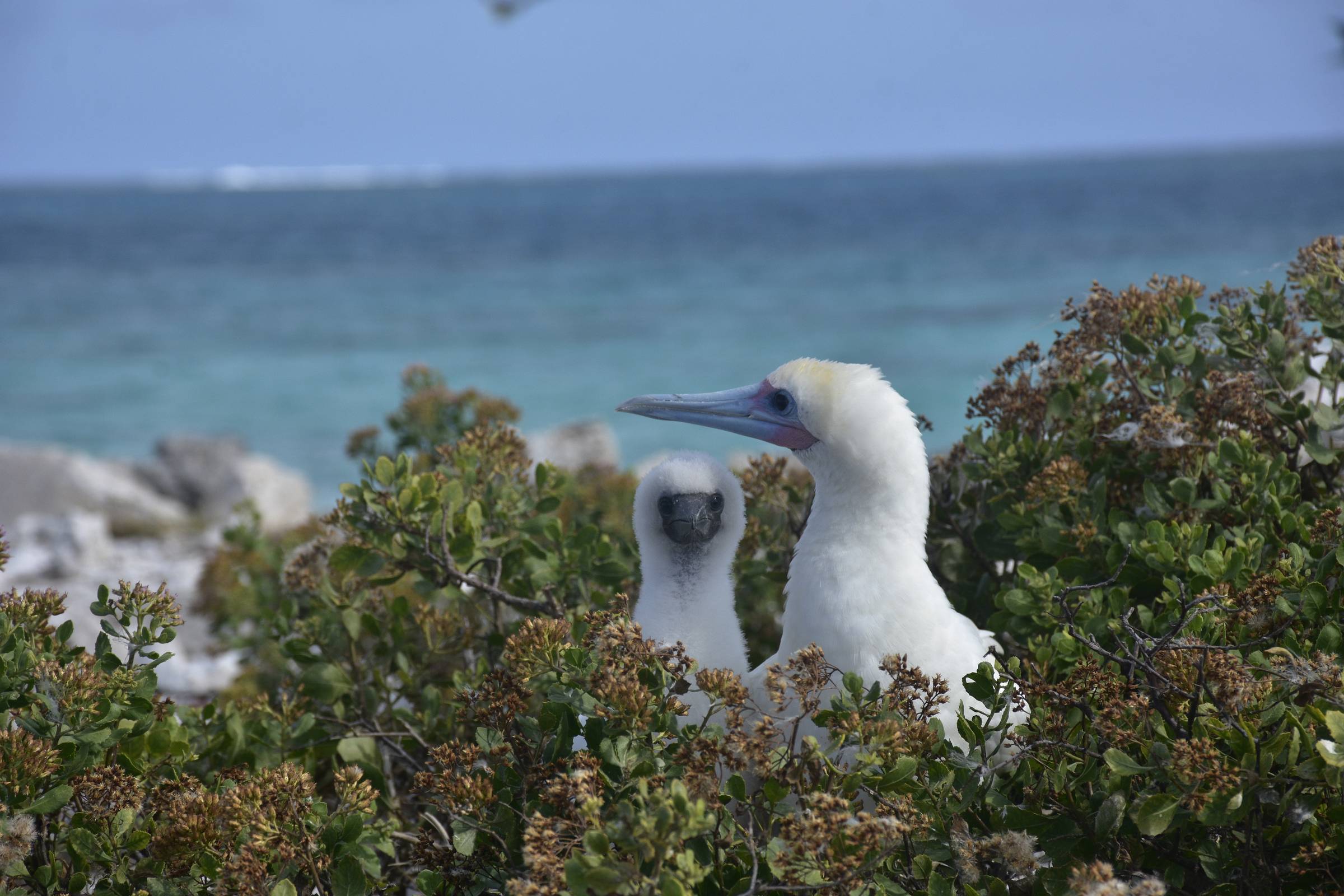
Johnston Atoll, located 825 miles southwest of Hawaii, serves as a vital nesting ground for tens of thousands of Pacific seabirds including red-tailed tropicbirds, red-footed boobies, and sooty terns. The remote wildlife refuge has been spared from industrial development following the suspension of SpaceX's proposed rocket testing project. Photo Credit: Red-footed boobies on Johnston.JPG, Jordan Akiyama/USFWS, Pacific Islands, Public Domain.
Pacific Wildlife Refuge Protected as Military Suspends SpaceX Rocket Tests
|
The U.S. Air Force has suspended a controversial SpaceX rocket testing project on Johnston Atoll
, a critical wildlife sanctuary in the North Pacific that serves as a cornerstone of Oceanian marine conservation. The remote atoll, located about 825 miles southwest of Hawaii and one-third of the way to the Marshall Islands, serves as one of the few remaining safe havens for tens of thousands of seabirds in the vast Pacific Ocean. The proposed hypersonic cargo delivery tests would have transformed this pristine refuge into an industrial testing ground, threatening species that rely on the isolated ecosystem for survival.
|
|
The suspension represents a significant victory for Pacific conservation efforts, particularly given the atoll's troubled environmental history. For decades, Johnston Atoll suffered extensive damage from U.S. military activities, including nuclear weapons testing and chemical weapons disposal that devastated the local ecosystem. Since becoming a wildlife refuge in 1926, extensive restoration work has helped populations of red-tailed tropicbirds, red-footed boobies, and sooty terns recover and thrive. These species, integral to the Pacific's marine ecosystem, depend on the atoll's isolation and stability for successful breeding cycles.
|
|
The decision highlights growing recognition across Oceania of the need to protect remaining pristine marine environments from industrial encroachment. With climate change already threatening Pacific island ecosystems and seabird populations facing pressure from rising sea levels and changing ocean conditions, preserving sanctuaries like Johnston Atoll has become increasingly critical. The suspension sends a strong message that military ambitions, however innovative, cannot come at the expense of irreplaceable Pacific wildlife habitats that serve the broader oceanic ecosystem.
|
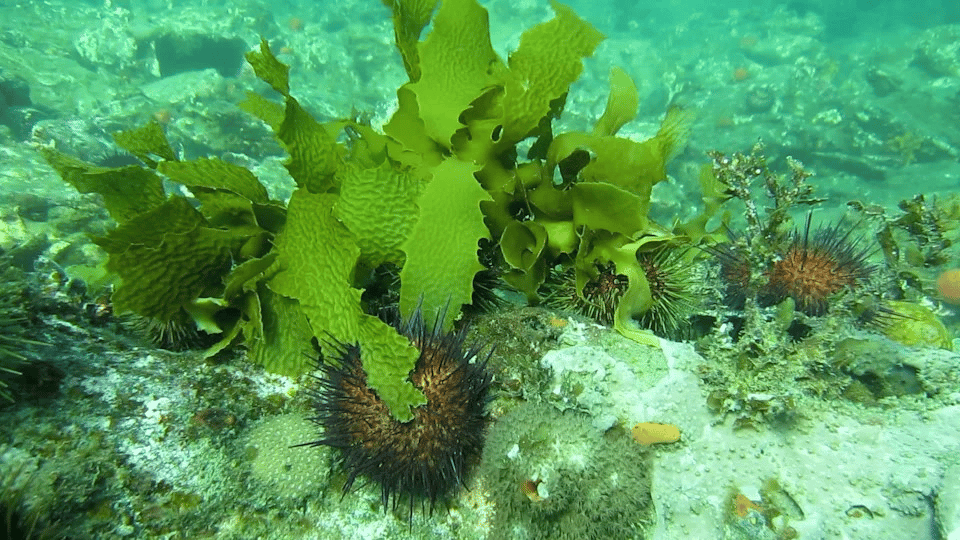
Sea urchins cluster around remaining kelp in Port Phillip Bay, where once-thriving underwater forests have declined by up to 98% over four decades. Scientists propose culling these overgrazing urchins to allow kelp ecosystems to recover and deliver millions in economic benefits. Photo credit: RMIT
Million-Dollar Marine Restoration: Scientists Call for Sea Urchin Cull to Save Australia's Underwater Forests
|
Marine scientists from RMIT University have unveiled a bold economic case for restoring Australia's decimated kelp forests, proposing a $43.9 million investment to cull exploding sea urchin populations in Port Phillip Bay near Melbourne. Kelp coverage in the greater region has declined by up to 98 per cent in the region over the last 40 years, creating vast underwater deserts where once-thriving forests supported diverse marine ecosystems. The numbers have been crunched, counted, and verified and it turns out that by culling the spate of overgrazing sea urchins currently munching their way through the kelp forests of Victoria's Port Phillip Bay, the local economy could see a return of up to $92 million.
|
|
The ecological crisis stems from climate change disrupting the natural balance of Victoria's marine environments. Sea urchins are native to waters around Melbourne and feed on kelp, but warming waters and changing ocean currents have caused their numbers to reach "unsustainable population levels", with some areas recording densities of up to 600,000 urchins per hectare. Because the changing ocean conditions that favour the urchins are caused by climate change, their numbers aren't expected to naturally correct themselves, which is why the researchers argue intervention is needed. The transformation from kelp forests to urchin barrens represents one of the most dramatic ecosystem collapses in Australian waters.
|
|
Beyond the environmental imperative, the restoration project promises significant economic returns across multiple sectors. The plan could see the tourism sector profit as kelp forests are a drawcard for divers and snorkellers. Fish stocks would also likely improve, aiding both commercial and recreational fishers. Most critically, restored kelp forests would provide substantial environmental services including water purification, carbon sequestration, and nitrogen removal from the bay. The $50 million investment would go towards paying commercial divers to cull sea urchins and the cultivation and deployment of kelp to help restore reefs, creating jobs in those sectors, while the economic benefits would flow to fishing, tourism, and the broader marine environment that underpins Australia's coastal economies.
|
PRESENTED BY VONU STUDIOS
Oceanian Animated Videos For Kids: Pawpaw Kids TV

|
Pawpaw Kids TV is a YouTube channel dedicated to engaging and educational content for children, with a specific focus on the Oceanian region. The channel features the Pawpaw Explorers—Illy the Iguana, Mo the Mongoose, and other animated characters—who embark on adventures that introduce young viewers to local wildlife, ocean currents, and cultural stories.
|
Pawpaw Kids TV offers a Pacific blend of entertainment and learning, making it a valuable resource for children to explore the rich cultures and natural wonders of the Oceania region. Simply scan the QR code to visit the Pawpaw Kids TV YouTube channel or click this link:
YouTube Link: Pawpaw Kids TV
|
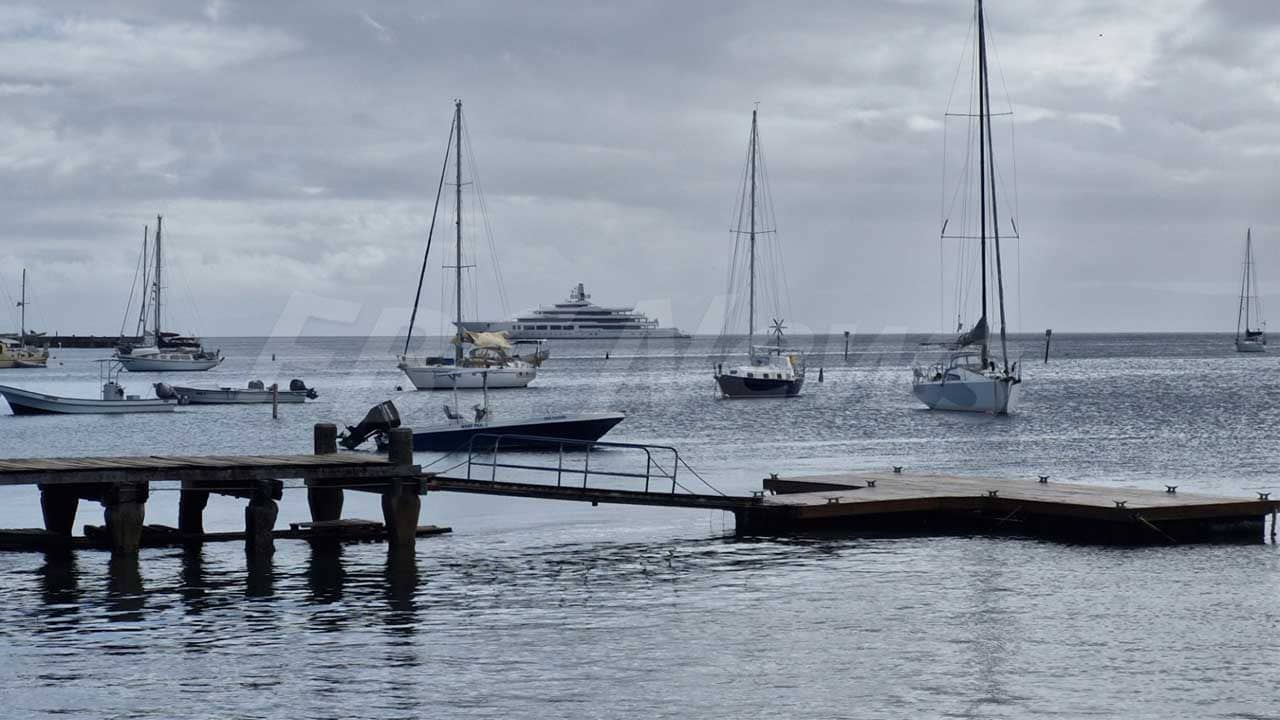
Yachts and vessels anchor in Fijian waters, where increasing maritime traffic has exposed gaps in border security at key entry points like Savusavu Marina. Officials acknowledge current enforcement measures are insufficient to handle the growing number of foreign arrivals. Photo credit: FBC News
Fiji's Border Security Challenge: Rising Yacht Traffic Exposes Port Vulnerabilities
|
Fiji's Ministry of Immigration has acknowledged serious gaps in border control at key yacht entry points, with officials admitting that current security measures cannot adequately handle the increasing number of foreign vessels arriving in the country's waters. The Ministry of Immigration has admitted that border control at the Savusavu port including Nawi Island Marina is not fully operational despite its status as a recognized entry point, raising concerns about national security and regulatory oversight. Assistant Minister Ratu Rakuita Vakalalabure revealed that current enforcement, limited to police, customs and immigration officers is not enough to handle the increasing number of visiting yachts and foreign vessels, highlighting a critical mismatch between resources and demand in one of the Pacific's most popular yachting destinations.
|
|
The security concerns extend beyond simple understaffing, exposing fundamental operational gaps in Fiji's border management system. Immigration officers can check permits but not inspect cargo, which falls under Customs, creating potential vulnerabilities in the screening process. The situation is particularly problematic given Fiji's strategic location as a major Pacific cruising hub, where Savusavu Marina is the perfect base for yachts to cruise the north and eastern islands of Fiji and is the first upwind Port of Entry for the Fiji Islands. Minister Vakalalabure's frank assessment reveals the scale of the challenge: "We cannot cater for the whole of Fiji, given how big Fiji is and how big Exclusive Zone Fiji is. We have a new marina here in Savusavu. It is also a vulnerable point."
|
|
The government is now scrambling to address these vulnerabilities through enhanced coordination and resource allocation. Vakalalabure called for a joint task force to strengthen operations and confirmed that security must be beefed up during peak yacht seasons, acknowledging safety concerns for frontline staff. The minister has also indicated ongoing talks to review all secondary ports and boost national border surveillance, suggesting a comprehensive overhaul of Fiji's maritime security framework may be in the works. This comes as the country grapples with broader security challenges, including the escalating threat of illicit drug trafficking and the need to establish new counter-narcotics capabilities, making robust border control increasingly critical for national security.
|
Thousands Face Super Crisis as First Guardian Fund Collapses
|
Thousands of Australians are facing potential financial ruin after the spectacular collapse of the First Guardian Master Fund, with about 6000 Australians having invested $590m into the superannuation fund now in limbo. The fund, which was founded in 2019 as a management investment scheme, has become part of a broader crisis affecting the Australian superannuation sector, with the recent collapses of Shield Master Fund, First Guardian and Australian Fiduciaries
involving a combined exposure for 12,400 clients of $1.2bn. The Federal Court has now ordered the fund and its responsible entity Falcon Capital to be wound up, leaving investors uncertain about recovering their retirement savings.
|
|
The collapse has exposed serious regulatory failures and predatory practices that targeted vulnerable investors seeking better returns on their superannuation. The Australian Securities and Investments Commission (ASIC) has issued a public warning after uncovering a series of rogue super schemes, including the First Guardian Fund, that misled investors through high-pressure sales tactics and deceptive marketing. The fund's operations were suspended in May 2024 when Falcon suspended the processing of applications and withdrawals from First Guardian subject to some limited exceptions, leaving thousands of investors unable to access their money while the fund's financial position deteriorated.
|
|
ASIC's intervention revealed a web of conflicts of interest and potential misconduct that underscores the need for stronger protections in the superannuation advice sector. ASIC has moved to wind up the First Guardian Master Fund, after concerns from the regulator investors were misled, including conflicts of interest with its director David Anderson. The regulator has also obtained interim orders freezing the assets of Falcon Capital Limited, the First Guardian Master Fund and David Anderson, while investigations continue into the advice firms that promoted these high-risk investments to retirees and pre-retirees. The collapse has reignited calls for reform of Australia's financial advice industry, with the federal government now considering changes to make it easier for victims of dodgy advice to seek compensation and hold advisers accountable.
|
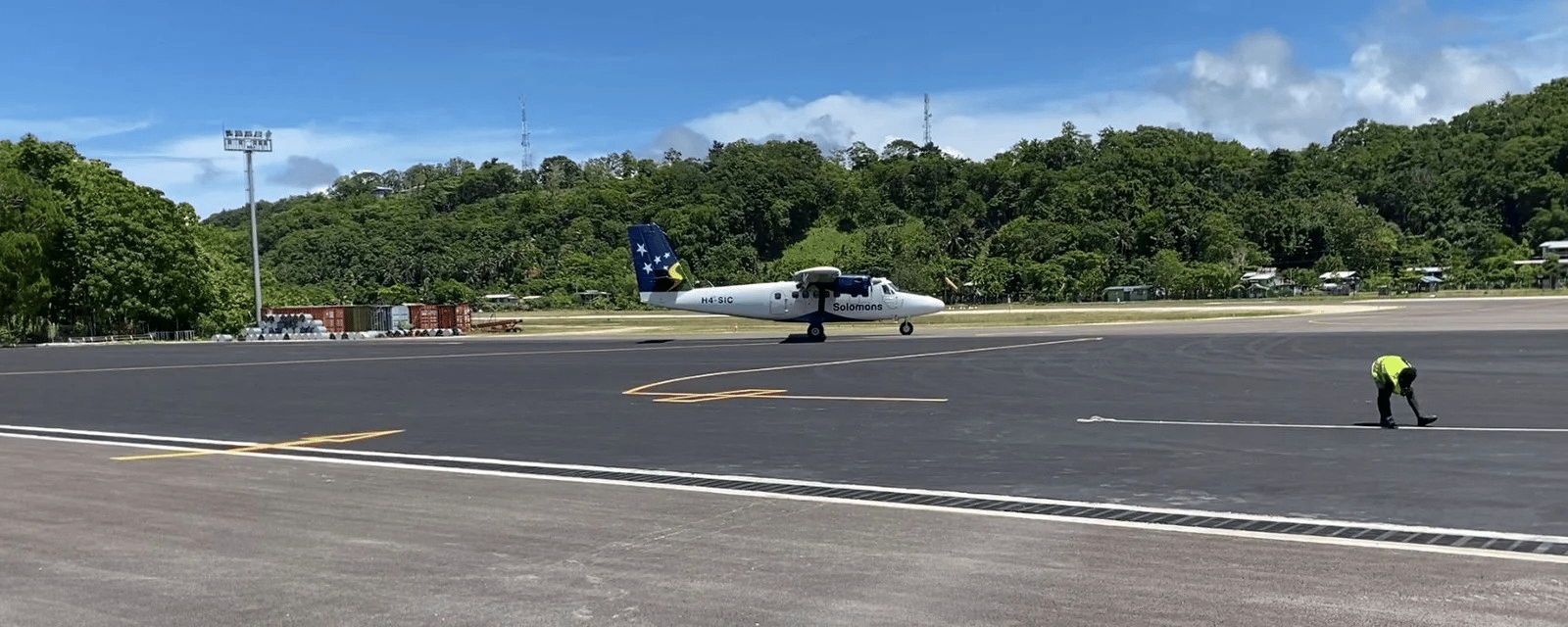
Solomon Airlines has recently implemented a controversial 5% fare increase that has drawn criticism from outer province leaders concerned about the burden on remote communities. Photo credit: The Pacific Community
Solomon Airlines Fare Increase Sparks Provincial Backlash
|
Solomon Airlines has implemented a 5% increase to all domestic airfares across the Solomon Islands, citing rising operational costs and the need to ensure continuation of services. This adjustment is essential to address rising operational costs and to help ensure the continuation of services to support the nation, according to the airline's announcement. The fare hike comes as the aviation industry globally faces mounting pressures from fuel costs and geopolitical instability affecting supply chains.
|
|
The increase has generated significant criticism from outer provinces, where residents already struggle with limited and expensive travel options. Temotu Premier Stanley Tehi has condemned the move as "unacceptable," arguing that it places an unfair burden on communities in remote regions like Temotu. The Temotu province is located in the far east of the Solomon Islands, it's geographically closer to Vanuatu than it is to its own capital – Honiara, making air travel particularly crucial for residents who have few alternative transportation options.
|
|
This marks the second significant fare adjustment in recent years, following a 7% increase in domestic airfares in August 2021 due to the worldwide rising cost of aviation fuel. The cumulative effect of these increases has compounded the financial burden on provincial travelers, who depend on Solomon Airlines as the primary means of connecting remote communities to essential services in the capital. The controversy highlights the ongoing challenge of balancing airline sustainability with accessibility for rural populations in the geographically dispersed Solomon Islands archipelago.
|
PRESENTED BY VONU STUDIOS
Children's Book: Vonu and the Druas Play Hide and Seek

|
Join Vonu the turtle and the stingray twins, the Druas Vai and Fai, in an exciting game of hide and seek! A heartwarming story filled with fun and adventure, perfect for young readers. Get your copy today!
|
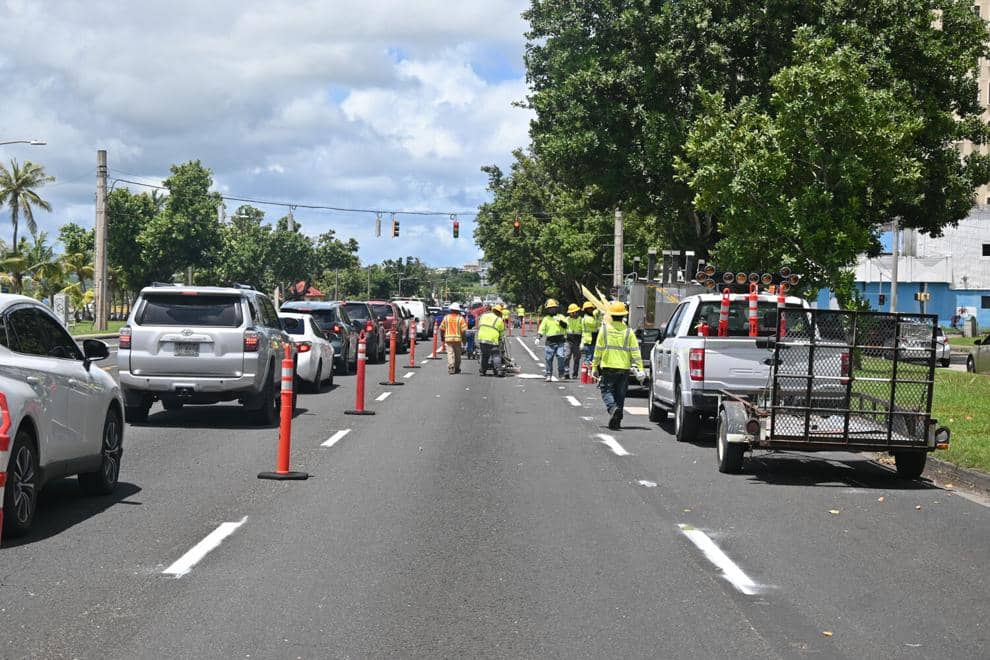
Construction crews work on road infrastructure improvements in Guam, part of the $260 million Marine Corps Drive upgrade project designed to support the island's military buildup and accommodate thousands of relocating Marines from Okinawa. Photo Credit: David Castro/The Guam Daily Post
Guam Secures $260 Million for Historic Marine Corps Drive Infrastructure Overhaul
|
Guam is set to receive $260 million for major upgrades to Marine Corps Drive, marking what officials describe as the island's largest coordinated road infrastructure project in over a generation. The Defense Access Road (DAR) projects total $260 million and are funded through the Department of Defense and the Federal Highway Administration. This massive investment comes as part of the broader military buildup on Guam, which is transforming the U.S. Pacific territory into a strategic hub for operations in the Indo-Pacific region.
|
|
The infrastructure upgrade is directly tied to the ongoing relocation of Marines from Okinawa to Guam, with Tokyo and Washington agreeing in 2012 to relocate about 9,000 of the 19,000 Marines stationed on Okinawa, including 4,000 to Guam in phases. The military population on Guam will grow by 2,500 through 2025, and by 2037, the population is expected to grow by 15,500, including active duty personnel, DOD civilians, reservists, National Guard personnel, and their dependents. The road upgrades are essential to support this influx, as more than 50 projects are currently under construction as part of the Defense Policy Review Initiative.
|
|
The military buildup represents a significant economic driver for Guam, with the Department of Defense spending approximately $9 billion on military projects on Guam from 2024-2028. However, the expansion has also created challenges, as about 5,000 Marines are expected to move onto Guam in the coming years, while Indigenous residents struggle to find affordable housing. The Marine Corps Drive improvements are part of a broader effort to modernize Guam's infrastructure to accommodate the strategic military presence while managing the impact on the local community. The project underscores Guam's growing importance as a forward operating base in the Pacific, serving as a critical component of U.S. defense strategy in the region.
|
Fire Ant Emergency in NSW Sparks Biosecurity Crisis
|
NSW authorities are responding to a major biosecurity emergency after an immature fire ant nest was discovered on a property in Tweed Heads, near the Queensland border. The discovery, reported by a vigilant community member late on Wednesday, prompted immediate action from NSW biosecurity officials who swiftly treated the nest and launched genetic analysis to determine its exact source. A new Biosecurity Emergency Control order has been issued establishing a 5km zone to restrict movement of high-risk materials, with authorities suspecting the ants likely arrived through contaminated materials such as turf, hay, or mulch transported across the border.
|
|
The invasive fire ant poses a devastating threat
to Australia's agricultural and health systems, with projections suggesting they could slash agricultural output by 40% if left unchecked. Known for their painful stings that can cause severe allergic reactions, fire ants attack humans, pets, and livestock, potentially creating up to 650,000 additional hospital appointments annually. The threat extends beyond humans, as native wildlife like koalas would be particularly vulnerable since they cannot remove the ants that "continue to sting until they die." The case of Queensland teenager Kaleb, who suffered life-threatening anaphylaxis after being stung just once despite having no prior allergies, demonstrates the serious medical risks these invasive pests pose.
|
|
Despite the concerning discovery, experts note several positive aspects of the response. The "immature" nest was found and destroyed early, likely preventing it from spreading to other locations or splitting into colonies. The fact that a community member reported the nest highlights the effectiveness of public awareness campaigns, while the nest's proximity to the existing biosecurity zone suggests the ants haven't traveled far into NSW. The NSW Government has significantly increased funding from $15 million to $95 million to combat the fire ant threat, implementing comprehensive measures including CCTV surveillance, police checkpoints, and sniffer dogs to prevent illegal transport of potentially contaminated materials across the border. Residents are urged to report suspected fire ant nests to the helpline on 1800 680 244.
|
SPOTLIGHT
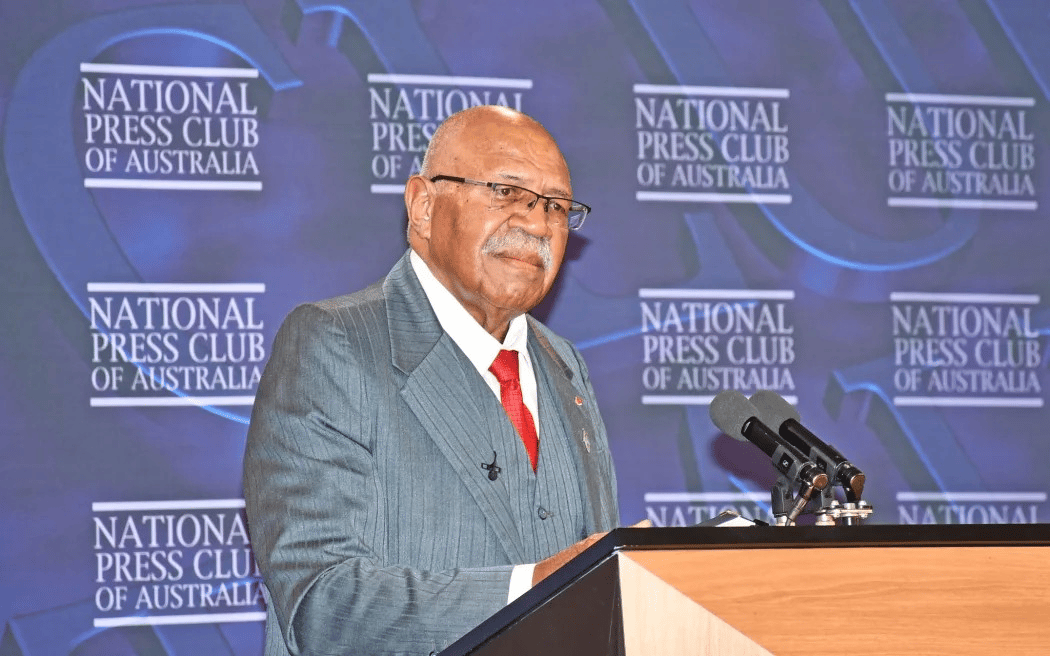
Fiji's Prime Minister Sitiveni Rabuka addresses the National Press Club of Australia in Canberra on July 2, 2025, where he offered to provide up to 5,000 Fijian personnel to help address Australia's Defence Force recruitment shortage. Photo Credit: Facebook / Fiji Government
Fiji Offers Bold Solution to Australia's Defence Recruitment Crisis
|
In a striking display of Pacific partnership, Fiji's Prime Minister Sitiveni Rabuka has offered to provide up to 5,000 personnel to help address Australia's mounting defence recruitment challenges. Speaking at the National Press Club in Canberra this week, Rabuka declared his country would offer "the whole lot" to support the Australian Defence Force (ADF), which is currently facing a critical shortage of approximately 5,000 personnel.
|
|
The proposal comes as Australia grapples with one of its most significant defence recruitment crises in recent memory. The ADF is struggling to meet its ambitious growth targets, with the 2023 Defence Strategic Review calling for a 30% increase in personnel by 2040. However, current recruitment efforts are falling well short of these goals, with the force missing its targets despite increased spending and recruitment drives.
|
A Partnership Born of Necessity
|
Rabuka's offer reflects both Fiji's strong military traditions and Australia's growing recognition that innovative solutions are needed to address its personnel shortfall. The Fijian Prime Minister emphasized that his country wouldn't push the proposal, stating that implementation would depend entirely on Australian policies and decisions.
|
|
This potential partnership builds on existing defence cooperation between the two nations. Currently, around 130 Republic of Fiji Military Forces personnel are embedded with Australia's 7 Brigade in Brisbane as part of Exercise Talisman Sabre 2025 and Exercise Coral Warrior 2025, demonstrating the operational compatibility between the two forces.
|
The Broader Context
|
The timing of Rabuka's offer is particularly significant given Australia's strategic challenges in the Indo-Pacific region. Defence Minister Richard Marles has already announced plans to spend an additional AU$50 billion on defence capabilities and previously suggested that Australia might recruit "certain non-Australian citizens" with specialized skills to address personnel shortages.
|
|
The recruitment crisis has become increasingly urgent as Australia seeks to modernize its military capabilities and maintain its strategic position in the region. Recent reports indicate that the ADF is currently operating at only 80% of its required personnel levels, despite separation rates declining from 11.6% to 10% annually.
|
Strategic Implications
|
The proposal highlights the evolving nature of Pacific partnerships and defence cooperation. While the Australian High Commission in Fiji has previously stated that the ADF has "no plans to target recruits from Pacific island nations," the persistent recruitment challenges may be forcing a reconsideration of this position.
|
|
Defence analysts have increasingly argued that Pacific recruitment could provide a mutually beneficial solution, offering Pacific Islanders career opportunities while helping Australia address its personnel shortages. The proposal also aligns with broader trends toward deeper military integration across the Pacific region.
|
|
While Rabuka's offer represents a significant gesture of Pacific solidarity, its implementation would require substantial policy changes and bilateral negotiations. The Australian government has not yet responded formally to the proposal, and any move to recruit Pacific personnel would need to address complex issues around citizenship, security clearances, and long-term career pathways.
|
SPORTS
Australia Opens Door to Enhanced Pacific Rugby Support

Australian and Pacific Island officials and rugby representatives gather at a diplomatic event showcasing the Australian-Pacific Rugby Union Partnership, highlighting Australia's commitment to strengthening regional ties through rugby development programs across the Pacific. Photo Credit: DFAT Media
|
Australia is signaling its readiness to expand rugby funding for Pacific nations as part of its broader diplomatic engagement strategy in the region. Building on the success of the existing Australian-Pacific Rugby Union Partnership (APRUP)
, Canberra is considering additional support for Pacific rugby development following requests from island nations seeking enhanced assistance. The current four-year $14.2 million investment through APRUP has already demonstrated Australia's commitment to strengthening regional ties through sport, with Rugby Australia partnering with the government to deliver high-performance rugby programs across the Pacific.
|
|
The potential expansion comes as rugby continues to serve as a powerful diplomatic tool for Australia in the Pacific, where the sport enjoys massive popularity and cultural significance. The existing APRUP program has been credited with bringing the region closer together through shared sporting passion, while also providing pathways for Pacific Island players to develop their skills and potentially compete at higher levels. Rugby's role in Pacific diplomacy has proven particularly effective given the sport's deep cultural roots in nations like Fiji, Samoa, and Tonga, where it serves as both entertainment and a source of national pride.
|
|
Any additional funding commitment would represent Australia's recognition of sport diplomacy as a crucial component of its Pacific engagement strategy, particularly as regional competition for influence intensifies. The success of Pacific Island teams in international rugby, including their strong performances in competitions like Super Rugby Pacific, has highlighted the potential for further investment in grassroots development and elite pathways. Australian officials view rugby support as a natural extension of their broader Pacific partnerships, offering tangible benefits to communities while reinforcing Australia's position as a committed regional partner through initiatives that resonate deeply with Pacific Island cultures.
|
REGIONAL EVENTS
-
Pacific Mini Games 2025
| Event |
Date |
Location |
Details |
| Competitions |
30 June – 9 July 2025
Rest Day: 6 July
|
Various venues in Koror, Airai, Melekeok, Ngiwal |
Sports include Athletics, Baseball, Triathlon, Swimming, Weightlifting, Judo, Wrestling, Table Tennis, Va‘a, Beach & Indoor Volleyball, Softball, and Archery.
|
| PGC General Meeting |
Sunday, 6 July 2025 |
Koror, Palau |
Meeting of the Pacific Games Council during the competition period. |
| Closing Ceremony |
Wednesday, 9 July 2025 |
Koror, Palau |
Final event including medal celebrations and cultural performances. |
|
QUICK TAKES
-
Tahiti is preparing to celebrate its inaugural Matari'i public holiday on November 20, 2025, replacing "Internal Autonomy Day" (June 29) as an official public holiday. Matari'i refers to the same star cluster as Matariki, and for Tahitians, November 20 will mark the start of Matari'i i ni'a — the "season of abundance" — which lasts for six months to be followed by Matari'i i raro, the "season of scarcity". This shift emphasizes ancestral wisdom, reconnects the community to environmental rhythms, and asserts cultural identity, following the successful model of New Zealand's Matariki public holiday celebrations. President of French Polynesia Moetai Brotherson agreed to make their local counterpart Matariʻi as an official public holiday, inspired by the success of the celebrations and representing a significant cultural empowerment initiative for the Tahitian people.
Was this email forwarded to you? Sign up here:
|
|
|
